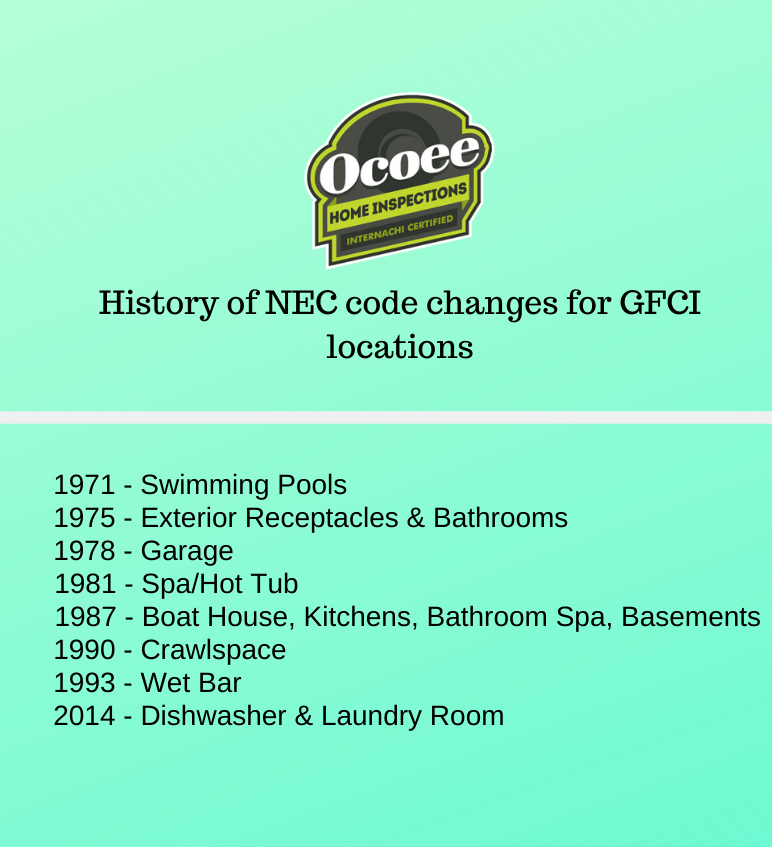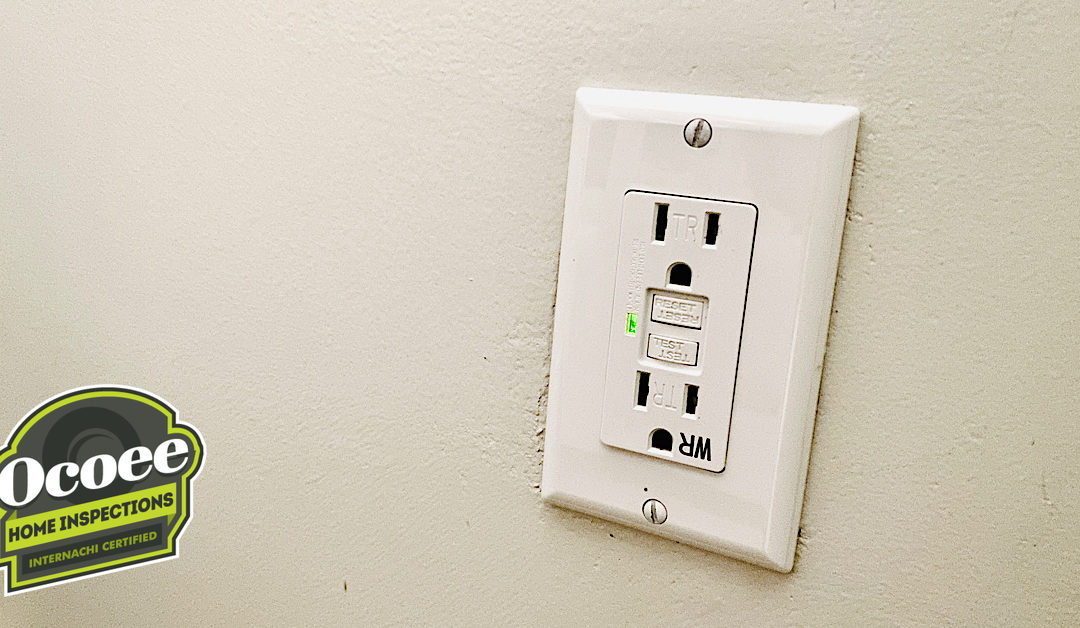GFCI outlets and their function can be a bit of a mystery for some. As a home inspector I can see a look of confusion when I say “The bathroom’s do not have GFCI outlets”. I will usually follow this up with “The outlets that have the little button in the middle”. The truth is these have been required by the NEC in one location or another dating back to 1971! So the question is why don’t more home owners know about these little life saving devices?
History:
Before GFCI outlets were required in homes there were an estimated 700-1000 deaths a year from electric shock. The NEC (National Electric Code) first required that all outlets by the swimming pool be protected starting in 1971. The next code year was 1975 and they added that all exterior and bathroom outlets be protected. The next code year was 1978 and they added Garage and hot tub requirements. If you are starting to notice a trend that they are required anywhere water can come in contact with electricity you would be correct.

How GFCI outlets work:
The way a GFCI outlet works is pretty amazing and yet simple. The device will monitor all the amps going in vs the amps going out. If it detects any variance even as small as 0.006 amps, it will immediately cut power to protect a person from electric shock. Another great thing about GFCI outlets is that you only need one to protect all other outlets downstream on the same circuit. Simply find the bathroom that is first in line on the circuit and all other bathrooms will be protected as well. It sure beats spending $15 for every outlet!

Be Safe!:
If you are the owner of a home older than 2000 you should consider updating the outlets in your home to current standards. This includes areas such as:
- Bathrooms
- Kitchen
- Garage
- Exterior
- Laundry
- Pool
- Hot tubs
- Wet bars
- Crawlspaces
- Basements
We test all GFCI outlets for proper operation during an inspection. If you would like to set up a home inspection you can contact us here.

